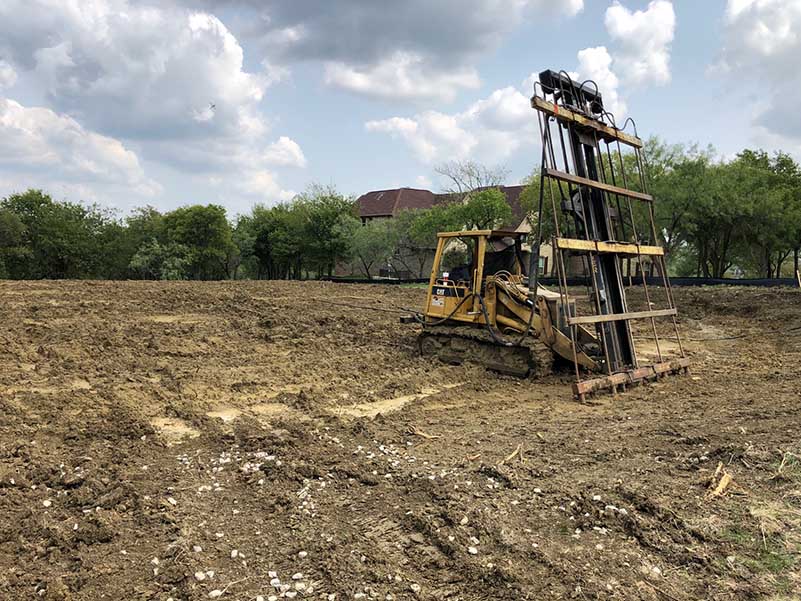Building a home is a big investment, and one key step that often gets overlooked is checking the soil stability. Stable soil is the backbone of any solid foundation. It helps ensure that your home will last for years to come without any major issues. By understanding the stability of the soil before you start building, you can prevent problems like sinking or cracking that could lead to expensive repairs.
So, what makes soil stability so important? The soil underneath your home supports the entire structure. If it shifts or becomes unstable, it can cause the foundation to weaken or even fail. This can lead to uneven floors, sticking doors, and other structural issues. By taking the time to assess soil stability before construction, you help protect your investment and ensure the safety of those living in your home.
Understanding Soil Stability
When we talk about soil stability, we’re referring to how well the ground can hold up under the weight of a building. Stable soil doesn’t shift or change easily, making it a reliable base for construction. On the flip side, unstable soil may swell, shrink, or erode, leading to trouble down the road.
Here are some common indicators of stable versus unstable soil:
– Stability typically means the soil is firm, compact, and free from excess moisture.
– Unstable soil might show signs like cracking, significant shifts in texture, or pooling water.
In places like Texas, understanding soil stability becomes even more pressing. These areas often face unique soil conditions. For example, expansive clay soil can cause the ground to expand and contract with changes in moisture. This can lead to foundation movement, which is why it’s crucial to identify and address potential risks early on.
Methods to Assess Soil Stability
There are several ways to find out how stable the soil is before you start building. Here are the main methods used by professionals:
1. Visual Inspection: Check the ground for obvious signs of instability. Look for cracks, uneven terrain, and areas where water tends to pool. These can hint at potential problems.
2. Professional Soil Testing: It’s a good idea to hire experts to take a closer look at the soil. They use specialized equipment to analyze the soil’s composition and behavior. This gives you a clear understanding of how stable it is.
3. Historical Data: Reviewing past records and data about local soil behavior can provide valuable insights. Knowing how the soil has acted under similar conditions can help predict future stability.
Techniques to Stabilize Unstable Soil
Dealing with unstable soil can be tricky, but there are several effective ways to tackle this issue. One common technique is the use of soil solidifiers. These substances help bind soil particles together, enhancing firmness and reducing movement caused by moisture changes. Another method involves moisture conditioning, which aims to balance the water content in the soil to minimize the risks of expansion and contraction.
An innovative approach involves injecting a specialized solution into the ground to change the behavior of the soil particles. This solution can alter interactions between water molecules and the soil, helping to prevent swelling and heave, which are common in clay-rich areas. This technique not only supports existing structures but can also save time compared to traditional methods.
Different situations demand specific stabilization methods. For instance, if you’re building on a site with a history of water retention problems, incorporating drainage systems along with moisture conditioning could be ideal. On the other hand, for new developments on clay-heavy soil, using an advanced solution injection process might be more suited to ensure stability from the start.
Common Soil Issues in Texas
Texas faces unique soil challenges. Clay soil is particularly problematic in these states, known for expanding and contracting with moisture levels. This movement can stress foundations, leading to cracks and misalignment in structures. The fluctuating seasons with heavy rains and dry spells further contribute to these issues by exacerbating soil movement.
Texas poses challenges with its vast stretches of clay soil that react strongly to changing weather conditions. During rainy periods, the soil expands, while in dry weather, it contracts, stressing foundations in the process.
To address these issues, residents and developers can take several proactive measures:
– Install Proper Drainage Systems: Ensure that water is directed away from foundations to prevent excessive soil moisture.
– Plan for Seasonal Changes: Consider the impact of weather patterns when choosing construction schedules and soil stabilization measures.
– Routine Maintenance and Checks: Regularly inspect properties for signs of shifting or cracking to catch potential problems early.
Summary
Understanding and assessing soil stability before construction is key to ensuring a strong, lasting home foundation. By familiarizing yourself with different assessment and stabilization methods, you can choose the right approach for your particular project. The proactive steps discussed can help mitigate risks associated with soil movement, especially in dynamic environments like those found in Texas. Implementing these practices can protect your investment and ensure the safety and integrity of your structures.
For those tackling the unique challenges of soil stability in Texas, the right support is within reach. Explore how ProChemical Soil Stabilization can assist in securing your foundation projects. By ensuring the ground beneath your structures is stable, you pave the way for enduring and resilient homes. Find out more about soil stability and how it can impact your construction projects.

